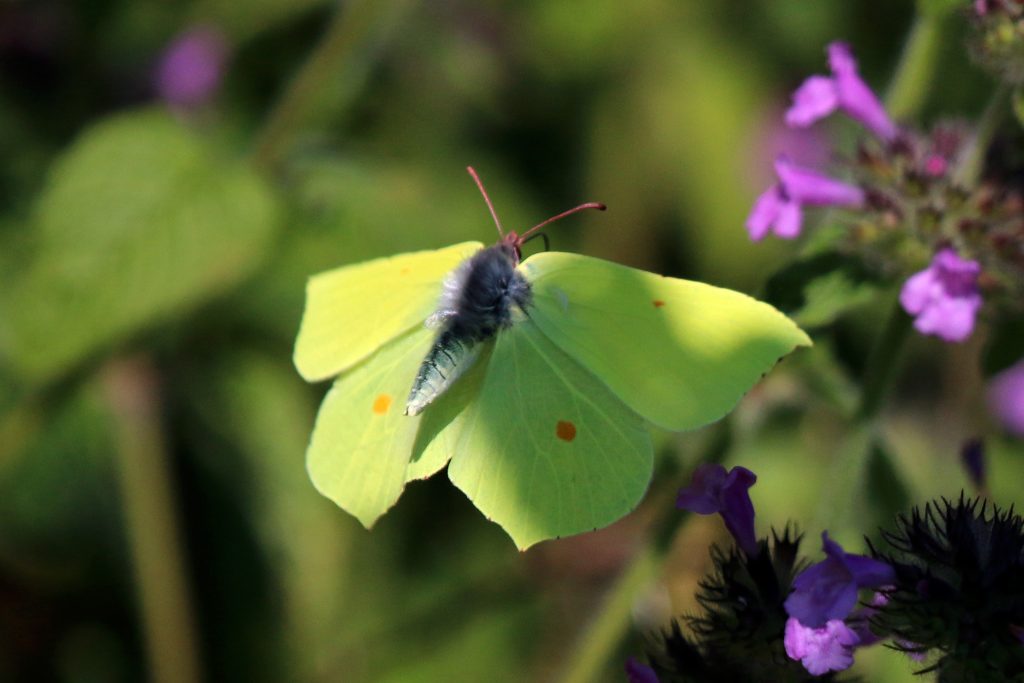AKA Butterflies. When my grandson was two, I took him to a butterfly garden. I carried him for the entire visit hiding his eyes against my neck, whimpering. I guess the flashes of color were too surprising, too unfamiliar.

Fortunately, he didn’t become lepidopterophobic. However, there are people with an irrational fear of butterflies and moths.
For those of us who welcome butterflies, their season is coming. June is the main flight period for many butterfly beauties, including swallowtail, black hairstreak, large blue, marsh fritillary, and glanville fritillary. There are almost 20,000 butterfly species.
Butterflies are Fascinating!
- Butterflies use chemoreceptors on their feet to taste.
- Adult butterflies of most species only live for a few weeks, although the caterpillar may take months to develop.
- Exceptions include migratory species, which may live up to 10 months.
- In warm climates there are continuous generations, producing adult butterflies year-round.
- Butterflies have a liquid diet using a flexible tongue called the proboscis, which resembles a tube.
- In addition to nectar, butterflies seek out nutrients in moist environments, such as mud, tears, and puddles. Scientists call this behavior “puddling.”
- Butterflies will happily drink blood if they come across it, though they do not seek it out.
- Nectar-filled plants naturally attract butterflies:
- Joe-Pye weed
- Ironweed
- Coneflowers
- Goldenrod
- Brightly-hued asters
- Butterflies actually have four wings, not two.
- Butterflies can perceive ultraviolet light.
- Butterflies have three body sections- head, thorax and abdomen. Other than this, they have two antennae, complex eyes, and an exoskeleton just like all other insects.
- Butterfly wings are transparent.
- Scales called lamellar cover a butterfly’s wings, giving them the patterns and colors we see.
- The dust you may see on your finger after touching a lepidopteran wing is actually made up of tiny wing scales (modified hairs). If too many scales are rubbed away, the wing is more likely to tear or fail.
- At night, or when the day is cloudy, adult butterflies rest by hanging upside down from leaves or twigs, where they are hidden among the foliage.
- They become quiescent but do not sleep like mammals do.
- Butterflies are able to learn signs that nectar is present.
- Adult butterflies communicate mostly through chemical cues—the males produce chemicals called pheromones to seduce the females.
- Additionally, a few species communicate with sound. The male Cracker butterfly (Hamadryas) can make loud noises with his wings.
- Size varies greatly:
- One of the smallest butterflies is the Eastern Pygmy Blue (Brephidium isophthalma), from the coastal southeastern United States, with a wingspan of about 5/8 of an inch.
- Among the largest are the Queen Alexandra Birdwing butterflies (Ornithoptera alexandrae) from New Guinea, with wingspans of up to 12 inches.
- Butterflies have the ability to go through a full metamorphosis; their life cycle includes four stages – egg, larva, pupa, and adult.
- If you see two adult butterflies with their abdomens linked tail-to-tail, they are mating. The male grasps the female and deposits a sperm packet, which fertilizes the female’s eggs.
- Butterflies can fly while mating, but they usually avoid moving unless they are disturbed.
- Tiny sensory hairs called tactile setae cover a butterfly’s body.
- Butterflies have huge compound eyes with numerous light-sensitive lenses, both of which have their own refractive systems and which together contribute to the formation of the image.
- Butterflies have a long chambered heart that runs the length of its body on the upper side.
- Butterflies must have a body temperature of 86F or above in order to fly.
- Some species of butterflies can fly at speeds of up to 3, 4.9-12.4, 25,or 30 mph depending on the source cited.
- According to entomologists, butterflies do not feel pain.
- Butterflies (and moths) can remember what they learned as caterpillars.
- Some butterflies protect themselves through camouflage—by folding up their wings, they reveal the undersides and blend in with their surroundings.
- If you want a butterfly to land on you, stand still and don’t wear perfume, aftershave, etc.




Facts About Monarch Butterflies
- They’re bright orange and poisonous.
- They weigh less than a paperclip.
- Pilots have reported seeing monarch butterflies as high as two miles up.
- Monarch larvae are picky eaters, thriving on a diet of milkweed, which is poisonous to most animals.
- Males release pheromones from scent glands on their back wings to attract females.
- They migrate from the Great Lakes to the Gulf of Mexico, a distance of about 2,000 miles, and return to the north again in the spring.
- Overwintering monarchs live up to eight months, while other generations only live about two to six weeks.
Save the Flutterbies!
So why am I writing about butterflies in January? Because the Environmental Defense Fund sent a flyer, “Butterflies are disappearing,” that cites pretty alarming statistics.
“Across the country, the entire monarch butterfly population has collapsed by nearly 1 billion since 1990.” It is now officially endangered. Many species of butterflies have already gone extinct.
Of course the point was to solicit donations to help restore butterfly habitats. But besides being eye candy, why bother about butterflies?
- Like bees, they are plant pollinators for many veggies and herbs, such as carrots, legumes, and mint
- About 1/3 of our food supply depends on butterflies as well as other pollinators
- They control the populations of insects like aphids
- They are food for birds and small mammals
Butterfly personality is a thing! We all know the social butterfly! This personality is social and influencing. They need to interact with others and are friendly, charming, persuasive, talkative, impulsive, and optimistic. They are usually good leaders and can motivate others.
Butterflies represent new beginnings, giving us hope for what the future has to bring. Their fluttering wings bring beauty to many! All across the globe, butterflies are viewed as symbols of rebirth, representing change, hope, endurance, and life!
“[Butterflies] represent strength, endurance, spirituality, trust, sustaining what they believe, transformation, and evolution.”
Cristina Panescu
BOTTOM LINE: What’s not to love about about butterflies?














